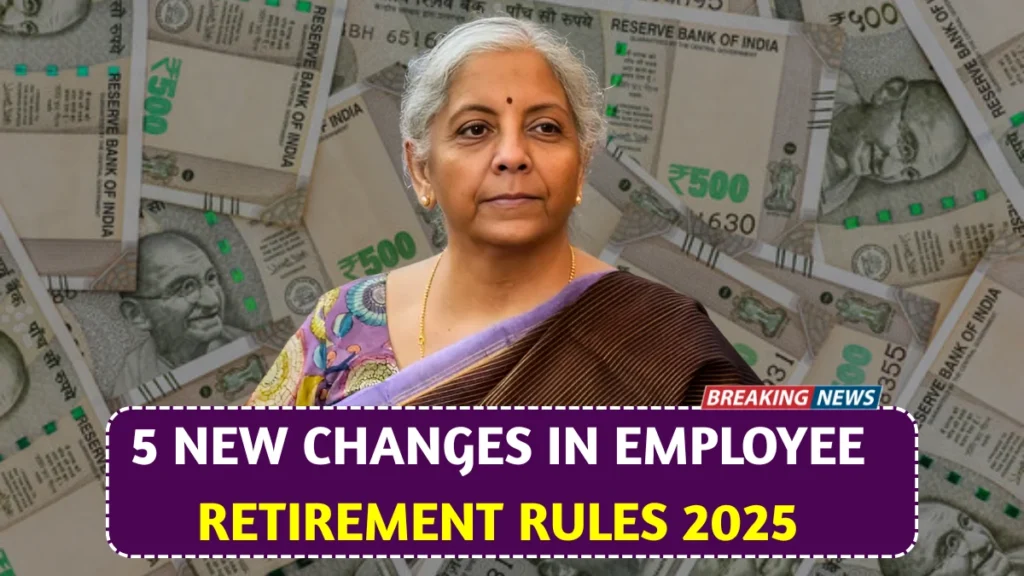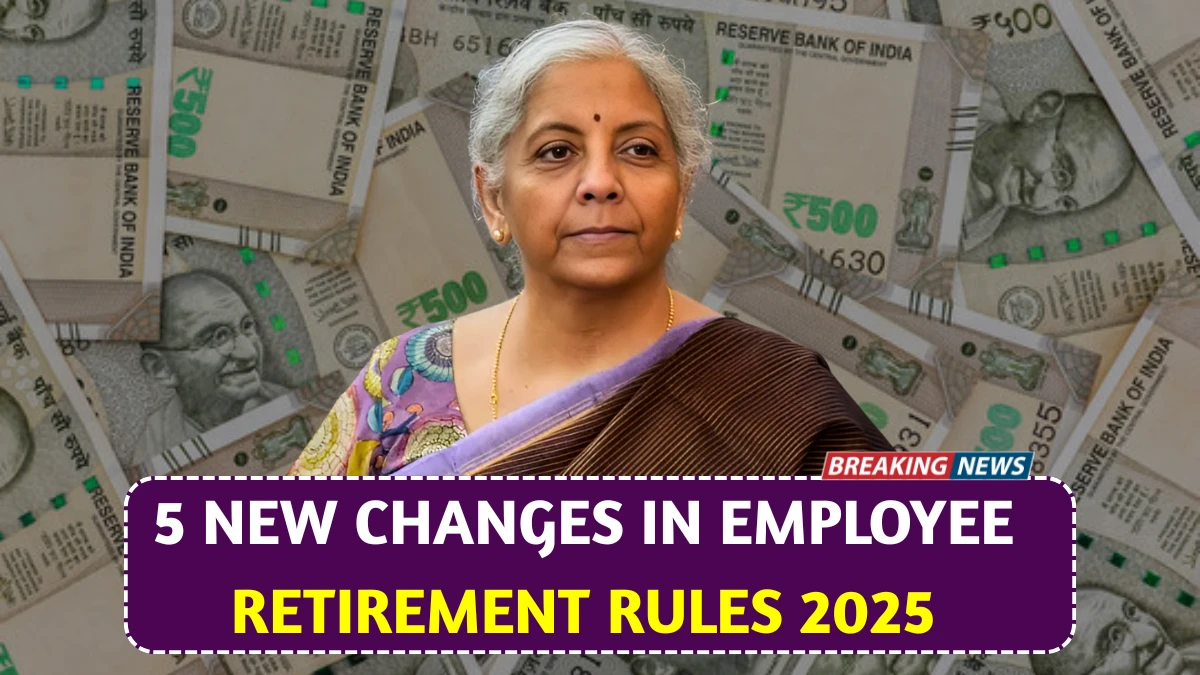5 New Changes in Employee Retirement Rules: Retirement planning is one of the most important financial decisions any worker can make. With shifting economic climates, tax policies, and pension programs, staying updated on changes in retirement rules is crucial for securing a comfortable future.
In 2025, several new updates to retirement plans will significantly affect employees, employers, and pensioners. Understanding these updates will help you plan effectively and avoid potential pitfalls. Below, we’ll delve into the key changes that could impact retirement strategies and expectations in the coming years.

Increased Contribution Limits for 401(k) Plans
For those relying on a 401(k) plan, one of the biggest changes will be an increase in contribution limits. In 2025, the IRS plans to raise the maximum annual contribution to 401(k) plans for both traditional and Roth versions. This means you’ll have the opportunity to save more towards your retirement without worrying about tax penalties for exceeding the old thresholds.
The contribution limits will vary depending on the type of 401(k) plan and whether the participant is in a pre-tax or post-tax retirement plan. These adjustments are expected to make it easier for workers to build larger nest eggs and compensate for inflation that has affected the purchasing power of previous contributions.
In addition to raising the contribution limits, this change is aimed at helping individuals better prepare for longer retirements. With life expectancy increasing, workers need to save more to ensure they can maintain their standard of living once they leave the workforce. Therefore, this increase in contribution limits provides workers with more flexibility in managing their retirement savings.
Expansion of Automatic Enrollment Programs
Another significant update involves the expansion of automatic enrollment programs. Many employers have already adopted automatic enrollment features in their retirement plans, but recent legislation is set to expand this practice. This change will require employers to automatically enroll employees in retirement savings plans, making it easier for individuals to save for their future.
While workers will still have the option to opt out of these programs, automatic enrollment is expected to increase participation in retirement plans. Studies have shown that employees are more likely to save when they are automatically enrolled, rather than having to take the initiative themselves. As part of this new rule, employers will also be required to increase employee contributions over time to help workers accumulate more savings.
By making retirement saving more seamless and ensuring that more people have access to these plans, the expansion of automatic enrollment programs is likely to have a long-term positive effect on the retirement security of millions of workers. This policy shift is designed to encourage responsible saving without putting the burden of decision-making on employees.
Age Limit Adjustments for Catch-Up Contributions
Catch-up contributions are additional contributions that workers over the age of 50 can make to their retirement plans. The IRS has traditionally allowed people in this age group to save extra money for retirement since they may have fewer years left to build their savings. In 2025, the age limit for making catch-up contributions will change, which means more workers will be able to take advantage of this option.
Previously, individuals aged 50 and older could contribute extra amounts to their retirement savings. The new change will lower the age threshold, allowing even more employees to make additional contributions. This adjustment will enable workers in their late 40s to start taking advantage of catch-up contributions and help those who may not have saved enough earlier in their careers.
For many workers, this change is particularly valuable since it allows them to make larger contributions during their peak earning years, which often occur later in life. With this added savings potential, workers can close the gap on missed savings or take advantage of the tax benefits associated with these contributions.
Expanded Retirement Plan Portability
As the modern workforce becomes more mobile, employees frequently change jobs, leading to questions about how their retirement plans can move with them. One of the major changes coming in 2025 addresses the portability of retirement plans. Under the new rules, employees will have greater flexibility in transferring their retirement savings between different employers’ plans without incurring unnecessary fees or penalties.
This change is especially beneficial for younger workers who may switch jobs multiple times throughout their careers. Previously, when switching employers, employees could face penalties or be forced to take distributions that could result in tax consequences. Now, they’ll be able to move their funds more freely between retirement plans, which helps maintain their long-term savings goals.
Increased portability ensures that retirement savings remain intact, even during job transitions, without disrupting employees’ financial futures. It also encourages employees to stay engaged with their retirement plans, as they can avoid the complexities associated with rolling over their retirement savings when moving from one job to another.
Changes to Required Minimum Distributions
Required Minimum Distributions (RMDs) are mandatory withdrawals that retirees must make from their retirement accounts, starting at a certain age. The purpose of RMDs is to ensure that individuals do not accumulate retirement savings indefinitely without paying taxes on them. In 2025, there will be updates to the age at which individuals must start taking RMDs.
Currently, the RMD age is set at 72 for most retirement accounts, but this age will be raised, giving retirees more time to allow their investments to grow before they must begin taking withdrawals. This change is especially beneficial for those who are still working or who want to extend their retirement savings growth further. By delaying RMDs, individuals have more control over their tax planning, giving them the opportunity to manage when and how they take income from their retirement accounts.
The change to RMDs will also reduce the tax burden on retirees, as they won’t be forced to withdraw money from their retirement plans earlier than necessary. This change is particularly important for individuals with substantial retirement savings, as it can significantly affect the amount of taxes they owe during retirement.
Conclusion
The upcoming changes to employee retirement rules are poised to have a meaningful impact on how people save and plan for their retirement. From increased contribution limits to enhanced portability and expanded catch-up options, these adjustments will provide employees with more opportunities to build a secure future. Understanding these changes and planning accordingly will help you make the most of your retirement savings and avoid potential pitfalls. With more flexibility and higher contribution limits, 2025 marks a positive step toward strengthening the retirement security of millions of workers. Keep an eye on these updates and ensure that you’re prepared for a financially secure retirement.
Disclaimer
This article provides an overview of upcoming changes to employee retirement rules, including adjustments to contribution limits, automatic enrollment, and other retirement-related policies. The information is based on current proposals and may be subject to change. For official guidelines and updates, please consult with a financial advisor or the relevant regulatory authorities.
